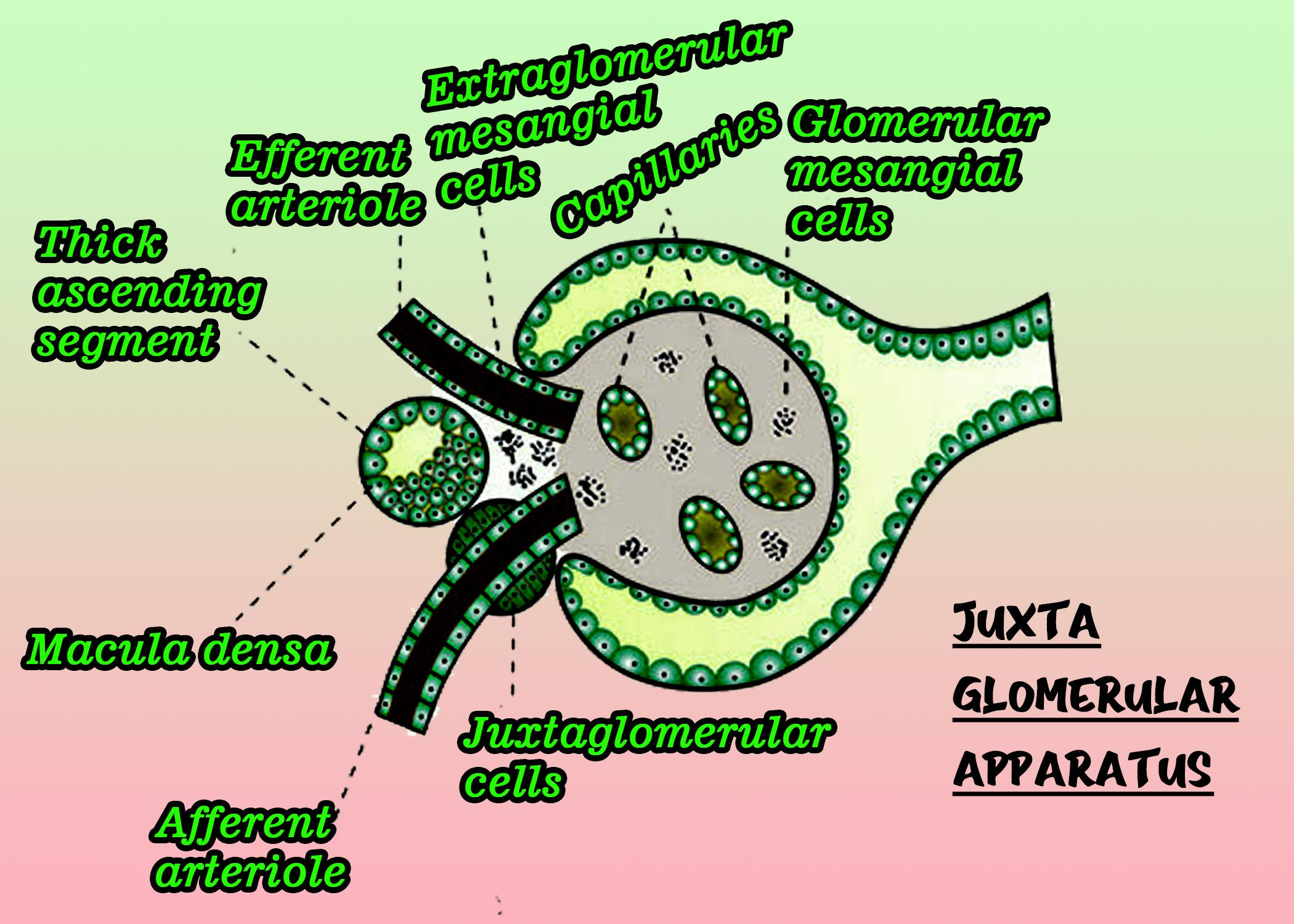
Arrange the following in a logical sequence.
Renal veins, Renal arteries, afferent arteriole, Efferent arteriole, Glomerulus(pathway of blood through the glomerulus).
Answer
551.4k+ views
Hint: Kidneys help to remove the waste product and excess fluid from the body. Oxygenated blood from the heart enters the kidney to maintain the blood flow which helps to separate the waste and then deoxygenated blood is removed which runs into the inferior vena cava.
Complete answer:
The blood supply in the kidney starts from the renal artery which arose from the dorsal aorta. These renal arteries when entered inside the kidney get divided into fine branches of the afferent arteriole and then the afferent arterioles enter Bowman's capsule to form glomerulus. A narrow lumen emerges from the glomerulus which is called efferent arteriole, forms a fine capillary network around renal tubules called peritubular capillaries and a minute network of these vessels run parallel to Henle's loop forming vasa recta. All the capillary networks join the renal vein which opens into the inferior vena cava.
So the correct sequence is Renal arteries, Afferent arteriole, Glomerulus, Efferent arteriole, Renal vein.
Additional information:
Nephrons are structural and functional units of the kidney which consist of a glomerulus and renal tubules. The glomerulus is a tuft capillary made up of afferent arteriole. Blood enters through afferent arteriole and then carried out from efferent arteriole. The renal tubule is a tubular structure divided into Bowman's capsule, proximal convoluted tubules, a loop of Henle, and distal convoluted tubule. Bowman's capsule is a double-layered cup-shaped structure that encloses glomerulus. Both glomerulus and Bowman's capsule together are known as Malpighian bodies. The visceral layer of the glomerulus composed of podocytes, these podocytes composed of slit pores through which glomerular filtrate filters. Bowman's capsule leads to a coiled tubular structure proximal convoluted tubule which bears long projection of microvilli helps to increase surface area. This tubule reabsorbs salts by active absorption. Proximal convoluted tubules then lead to a U-shaped nephron which is also called a loop of Henle. Loop of Henle is divided into an ascending and descending loop of Henle which helps to reabsorb water and electrolytes. Distal convoluted tubules emerge from a loop of Henle lying in the cortex. Distal convoluted tubule joins collecting duct with few microvilli inside the cell, it helps in tubular secretion and reabsorption of water and salts.
Note: The juxtaglomerular apparatus regulates the glomerular filtration rate. An increase in blood pressure increases the glomerular filtration rate when there is a fall in glomerular blood flow juxtaglomerular cell releases enzyme renin which converts angiotensin I to angiotensin II. Angiotensin II is a powerful vasoconstrictor which helps to increase glomerular blood pressure.

Complete answer:
The blood supply in the kidney starts from the renal artery which arose from the dorsal aorta. These renal arteries when entered inside the kidney get divided into fine branches of the afferent arteriole and then the afferent arterioles enter Bowman's capsule to form glomerulus. A narrow lumen emerges from the glomerulus which is called efferent arteriole, forms a fine capillary network around renal tubules called peritubular capillaries and a minute network of these vessels run parallel to Henle's loop forming vasa recta. All the capillary networks join the renal vein which opens into the inferior vena cava.
So the correct sequence is Renal arteries, Afferent arteriole, Glomerulus, Efferent arteriole, Renal vein.
Additional information:
Nephrons are structural and functional units of the kidney which consist of a glomerulus and renal tubules. The glomerulus is a tuft capillary made up of afferent arteriole. Blood enters through afferent arteriole and then carried out from efferent arteriole. The renal tubule is a tubular structure divided into Bowman's capsule, proximal convoluted tubules, a loop of Henle, and distal convoluted tubule. Bowman's capsule is a double-layered cup-shaped structure that encloses glomerulus. Both glomerulus and Bowman's capsule together are known as Malpighian bodies. The visceral layer of the glomerulus composed of podocytes, these podocytes composed of slit pores through which glomerular filtrate filters. Bowman's capsule leads to a coiled tubular structure proximal convoluted tubule which bears long projection of microvilli helps to increase surface area. This tubule reabsorbs salts by active absorption. Proximal convoluted tubules then lead to a U-shaped nephron which is also called a loop of Henle. Loop of Henle is divided into an ascending and descending loop of Henle which helps to reabsorb water and electrolytes. Distal convoluted tubules emerge from a loop of Henle lying in the cortex. Distal convoluted tubule joins collecting duct with few microvilli inside the cell, it helps in tubular secretion and reabsorption of water and salts.
Note: The juxtaglomerular apparatus regulates the glomerular filtration rate. An increase in blood pressure increases the glomerular filtration rate when there is a fall in glomerular blood flow juxtaglomerular cell releases enzyme renin which converts angiotensin I to angiotensin II. Angiotensin II is a powerful vasoconstrictor which helps to increase glomerular blood pressure.

Recently Updated Pages
Why are manures considered better than fertilizers class 11 biology CBSE

Find the coordinates of the midpoint of the line segment class 11 maths CBSE

Distinguish between static friction limiting friction class 11 physics CBSE

The Chairman of the constituent Assembly was A Jawaharlal class 11 social science CBSE

The first National Commission on Labour NCL submitted class 11 social science CBSE

Number of all subshell of n + l 7 is A 4 B 5 C 6 D class 11 chemistry CBSE

Trending doubts
What is meant by exothermic and endothermic reactions class 11 chemistry CBSE

10 examples of friction in our daily life

One Metric ton is equal to kg A 10000 B 1000 C 100 class 11 physics CBSE

1 Quintal is equal to a 110 kg b 10 kg c 100kg d 1000 class 11 physics CBSE

Difference Between Prokaryotic Cells and Eukaryotic Cells

What are Quantum numbers Explain the quantum number class 11 chemistry CBSE




